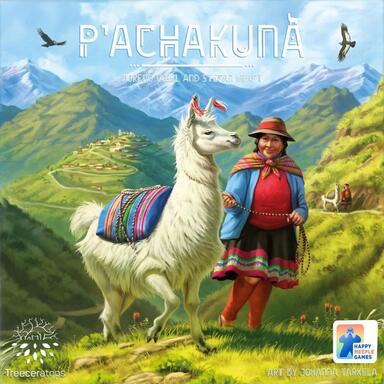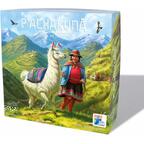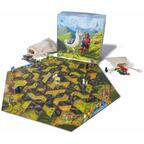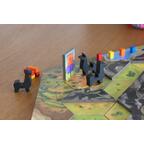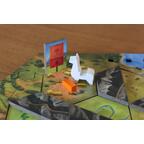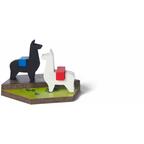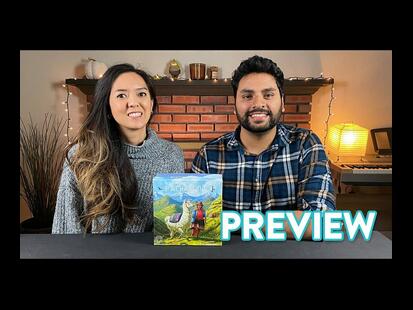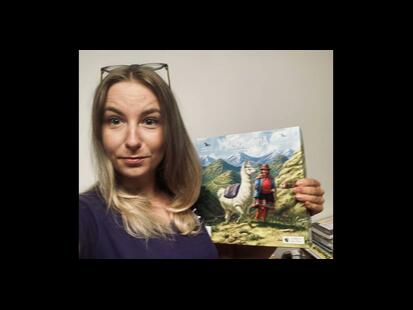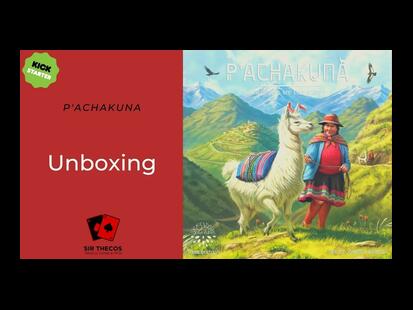P'achakuna takes you on a journey into the heart of the Andes with your most trusted friend, your llama. The game features white and black llamas, with you controlling one colour and your opponent the other. White llamas only travel through green valleys, while black llamas climb the barren mountains. Whichever colour they are, you must travel to the mountain villages to deliver the dye they want, ideally collecting dye for yourself along the way. In P'achakuna, each player starts with a lama of their colour in the centre of the board, in the white village, with a white dye loaded on their back. The board is made up of hexagonal tiles that are either half valley/half mountain, two-thirds valley/one-third mountain, or vice versa. The tiles are extremely thick so that you can grab the mountain part of the tile and pull it off the board. There are six villages around the perimeter of the board, each corresponding to one of the primary or secondary colours. Each village contains a random demand tile that shows two colours, one in high demand and one in low demand; neither of these colours can match the colour of the village.
On a turn, you may first rotate an unoccupied tile; by paying two dye resources from your personal reserve, you may rotate a second tile. You must then move each of your llamas at least one space, but you can move them further if you wish and if the terrain allows. You rotate the tiles to create long valley or mountain paths so that your llamas can ideally travel far on each move. If you move a llama into a village, you trade the dye from that llama. If the dye you carry is not in demand in that village, you simply exchange it for the village dye, for example green for yellow. If the dye is in demand, you add 1 or 2 dyes of that delivered colour to your personal stash (depending on whether demand is low or high), then place a dye corresponding to that village colour on your llama. If you get a colour from your personal reserve and it is not on your score track, you can place it on your score track. Either way, you replace the demand tile in that village, making sure that the colour of that village is not on the demand tile.
During a turn in a village, you may donate four dyes from your personal pool to acquire a new llama, which is then placed in that village with a dye from that village on its back. Each llama moves on your turn, and you can have a maximum of three llamas. As soon as you have a dye of each of the seven colours on your score track, you win. To hold the request tiles, the game includes a cloth bag handmade in Bolivia and Peru, which supports the local community.
P'achakuna funded on the Kickstarter platform
P'achakuna was funded on the Crowdfunding Kickstarter (See the campaign) platform on the Dec 1, 2020, the campaign lasted 29 days. 4,588 people helped funded the game, whose the amount requested was CHF 20,000.00. Thanks to these 4,588 people the game could be funded up to CHF 264,993.00, ~1,324.96%.
Rule, Educational Sheet ... 2 Files Available2 Files Available
Download the rule for P'achakuna or any other documents (scenarios, goodies, pedagogical sheet, erratum, ...). 2 PDF files are available. See all available files
Contents of the box : 54 Terrain tiles, 1 white Village tile, 42 Command tiles, 57 Resources, 6 Lamas, 6 pieces for the game board frame, 1 assembly plan, 1 game rule.
